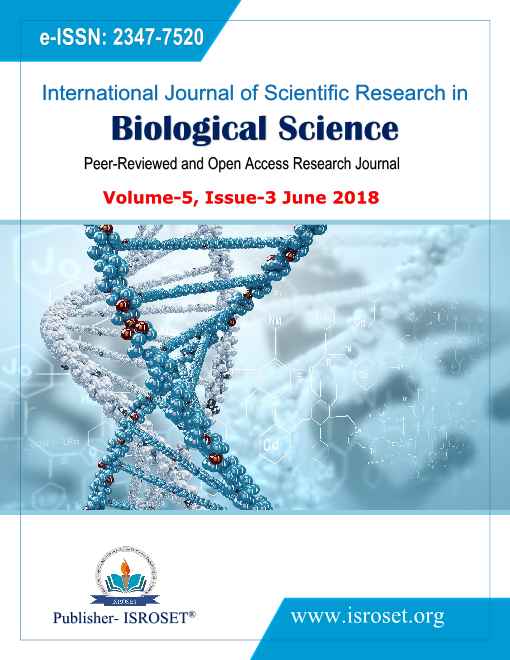Preliminary Phytochemical Analysis and Invitro Anti–viral Activity of Ethanolic extract of Whole plant of Tinospora cordifolia (Thunb.) Miers against Hepatitis-A Virus
Keywords:
Tinospora cordifolia, whole plant, MTT assay, Huh-7 cell lines, anti-viralAbstract
Herbal product design refers to the process of developing, standardizing, processing, and validating an herbal product for the market. Hepatitis A is an infectious disease of the liver caused by the hepatitis A virus (HAV). There are no specific medicines to cure infection with hepatitis A. Hence, there is a need for the development of less toxic, more efficacious and cost-effective antiviral agents. The present work highlighted the invitro anti–viral activity of ethanolic extract of whole plant of Tinospora cordifolia (Thunb.) Miers against HAV. Ethanolic extract of the selected plant was prepared by soxhlet apparatus and rotavap. For the antiviral screening against HAV, toxicological effect of selected plant extract was determined through MTT (3-(4,5-dimethylthiazol-2-yl)-2,5-diphenyltetrazolium bromide) cell proliferation assay using Huh-7 cell lines. The standard used is Camptothecin (CPT) at 25µG concentration. Plant extract was tested at 3.125 μg/mL, 6.25μg/mL,12.5μg/mL, 25 μg/mL and 50 μg/mL concentrations. The cell morphology was observed and recorded under microscope. The results clearly indicated the selected plant extract shows a dose dependent activity and it was maximum at 50 μg/mL concentration where it shows only 56.24% of virus viability and it was comparable to standard drug where it shows 43.01% of viability. Phytochemical screening of selected plant extract reveals the presence of different secondary metabolites like alkaloids, flavonoides, tannins, resins, steroids. Presence of these compounds in alone or combination might be responsible for the observed antiviral activity.
References
M. Ramaiah, K. Devilal,, S. Babu and P. Harika, “In-vitro MABA anti-tuberculosis assay of Eclipta Alba(L.) Hassk whole plant”, The Pharma Innovation Journal, Vol. 6, Issue 5, pp.103-105, 2017.
R. Maddi, C. Guntupalli, Y. Kanuri, “In vitro biological standardization, formulation and evaluation of directly compressed polyherbal anthelmintic tablets” Pharmacognosy Journal, Vol. 5, Issue 3, pp.130-134, 2013.
M.J.M. Christenhusz, and J.W.Byng, “The number of known plants species in the world and its annual increase” Phytotaxa, Vol. 261, Issue 3, pp. 201–217, 2016.
S. Saha and S. Ghosh, “Tinospora cordifolia: One plant, many roles” Ancient Science of Life, Vol. 31, Issue 4, pp: 151–159, 2012.
Kirti S, Mishra NP, Singh J and Khanuja SPS. Tinospora cordifolia (Guduchi), a reservoir plant for therapeutic applications: A Review. Indian Journal of Traditional Knowledge 2004, 3(3):257-270.
K.R. Khandelwal, “Practical Pharmacognosy techniques and experiments”, Nirali Prakashan publications, India, 8th ed. 2001.
K.R. Brain, T.D. Terner, “The practical evaluation of Phytopharmaceuticals”, Wright Scientechnica, Bristol, pp. 4-35, 1975.
World Health Organization Expert Committee. Quality Control Methods for Medicinal Plant Materials, WHO press publishes, Geneva, 2002.
J.B. Harborne, “Phytochemical methods – A guide to modern techniques of plant analysis”, Chapman & Hall publications, 3rd ed. 1998.
C.K. Kokatae, “Practical Pharmacognosy”, Vallabha Prakashan publications, India New Delhi, pp.107-103, 2002.
T. Javed et al, “In-vitro antiviral activity of Solanum nigrum against Hepatitis C Virus”, Virology Journal, Vol. 19, Issue 8, pp. 26, 2011.
S. Rehman et al, “Antiviral activity of Acacia nilotica against Hepatitis C Virus in liver infected cells”, Virology Journal, Vol. 8, pp. 220, 2011.
N.C. Priya and P. Saravana Kumari, “Antiviral activities and cytotoxicity assay of seed extracts of Piper longum and Piper nigrum on Human Cell Lines”, International Journal of Pharmaceutical Sciences Review and Research, Vol.44, Issue 1, pp. 197-202, 2017.
J. Wang et al, “Glycyrrhizic acid as the antiviral component of Glycyrrhiza uralensis Fisch. against coxsackievirus A16 and enterovirus 71 of hand foot and mouth disease”, Journal of Ethnopharmacology, Vol. 147, Issue 1, pp.114-121,2013.
Downloads
Published
How to Cite
Issue
Section
License

This work is licensed under a Creative Commons Attribution 4.0 International License.
Authors contributing to this journal agree to publish their articles under the Creative Commons Attribution 4.0 International License, allowing third parties to share their work (copy, distribute, transmit) and to adapt it, under the condition that the authors are given credit and that in the event of reuse or distribution, the terms of this license are made clear.







